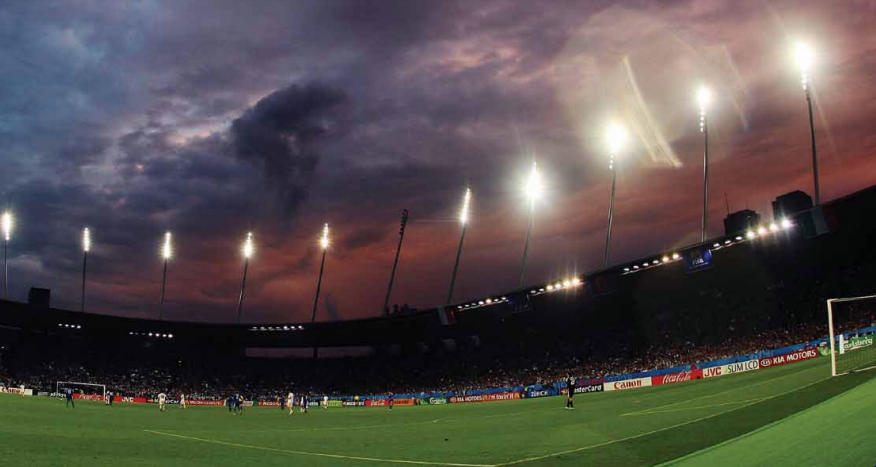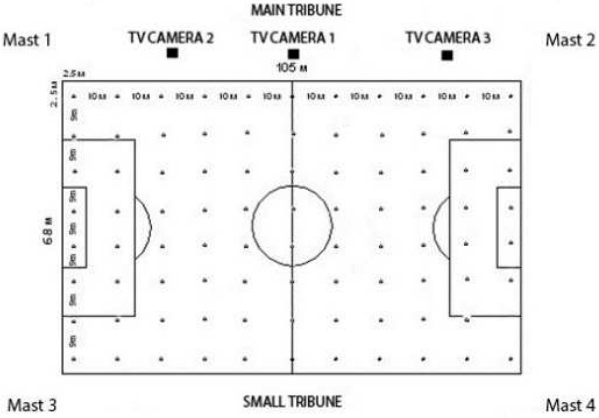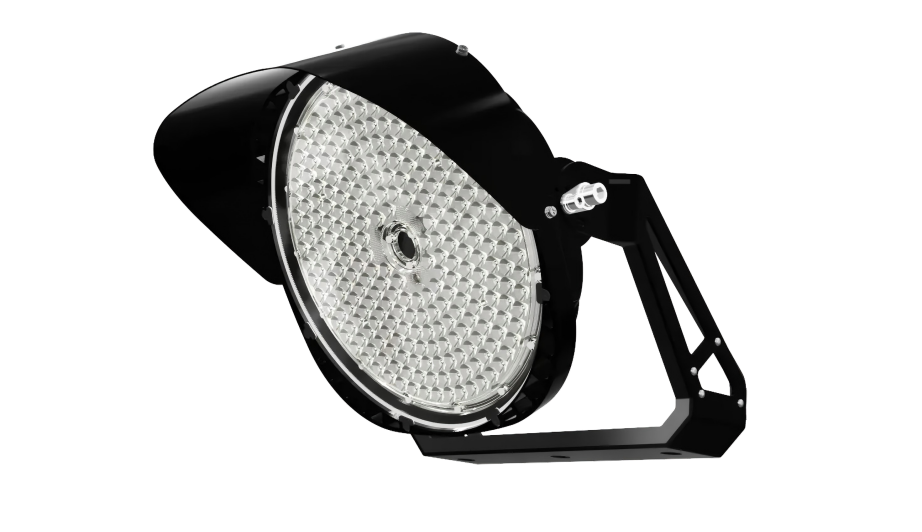UEFA-Compliant Football Stadium Lighting

Directory:
1. Introduction
2. Key Challenges in Traditional Stadium Lighting
3. LED Lighting Reconstruction
4. Implementation Strategies
5. Measurement Protocol
1. Introduction: The Shift to LED Sports Lighting
Modern football stadiums require lighting systems that balance UEFA standards, energy efficiency, and spectator experience. This article explores a case study on reconstructing a stadium's lighting using advanced LED technology, achieving a 55% reduction in energy consumption while exceeding UEFA's 1,500 lux horizontal illuminance mandate.
2. Key Challenges in Traditional Stadium Lighting
2.1 Outdated Metal Halide Systems
High energy consumption (475 kW total power).
Short lifespan (4,500 hours) and frequent maintenance.
Poor uniformity (U1hor = 0.5, U2hor = 0.7).
2.2 Non-Compliance with UEFA Standards
Insufficient vertical illuminance (≤1,000 lux) for HD broadcasts.
Glare ratings (GR) exceeding 50, causing player and spectator discomfort.
3. LED Lighting Reconstruction: Technical Solutions
3.1 Lighting Design & UEFA Compliance
Horizontal Illuminance: Achieved 1,520 lux (avg) with uniformity ratios U1hor = 0.7 and U2hor = 0.78.
Vertical Illuminance: 1,463 lux (avg), meeting UEFA's 1,250 lux requirement for Champions League matches.
Glare Control: GR reduced to 48 (<50 threshold) via optimized mast positioning and anti-glare optics.
3.2 Energy & Cost Savings

*Assumes $0.15/kWh and 1,000h/year operation.
3.3 Advanced Features
Dimmable LEDs: Adjust brightness for training vs. matches.
IP66 Rated Fixtures: Weather-resistant for outdoor durability.
100% LOR (Light Output Ratio): Zero light loss vs. 76% in old systems.
4. Implementation Strategies
4.1 Mast Positioning Optimization
Used Dialux EVO software to simulate light distribution.
Maintained existing 34m masts but reduced fixtures from 216 to 144 (-33%).
4.2 Aiming Devices for Precision
Installed angle-adjustable sights (Fig. 1) to direct light, minimizing spillage.

5. Measurement Protocol
Conducted post-installation tests using an 11×8 grid (Fig. 2) per BDS EN 12193:2019:
Horizontal: 1.5m height, 10m spacing.

Vertical: Tripod-mounted luxmeters for camera sightlines.
Transitioning to LED sports lighting not only meets UEFA's stringent requirements but also cuts operational costs by 55%. By prioritizing illuminance uniformity, glare control, and CRI >80, stadiums enhance both athletic performance and broadcast quality. For compliance, always validate designs with accredited measurement protocols.
6. Related Product
7. FAQs
Q: Why is LED lighting better for football stadiums than traditional metal halide lamps?
A: LED floodlights offer higher luminous efficacy (more light per watt), lower energy consumption, longer lifespan (up to 60,000+ hours), and better control over beam angles and uniformity. They also reach full brightness instantly and are dimmable—unlike metal halide lamps.
Q: How much energy can be saved by switching to LED stadium lighting?
A: A typical LED upgrade can cut energy consumption by 50% or more. For example, a stadium using 475 kW with metal halide lamps might reduce usage to around 216 kW with LEDs—while increasing light quality and uniformity.
Q: What are UEFA's lighting requirements for football stadiums?
A: Please refer UEFA Football Stadiums Flood Lighting Requirements
_thumb.jpg)

